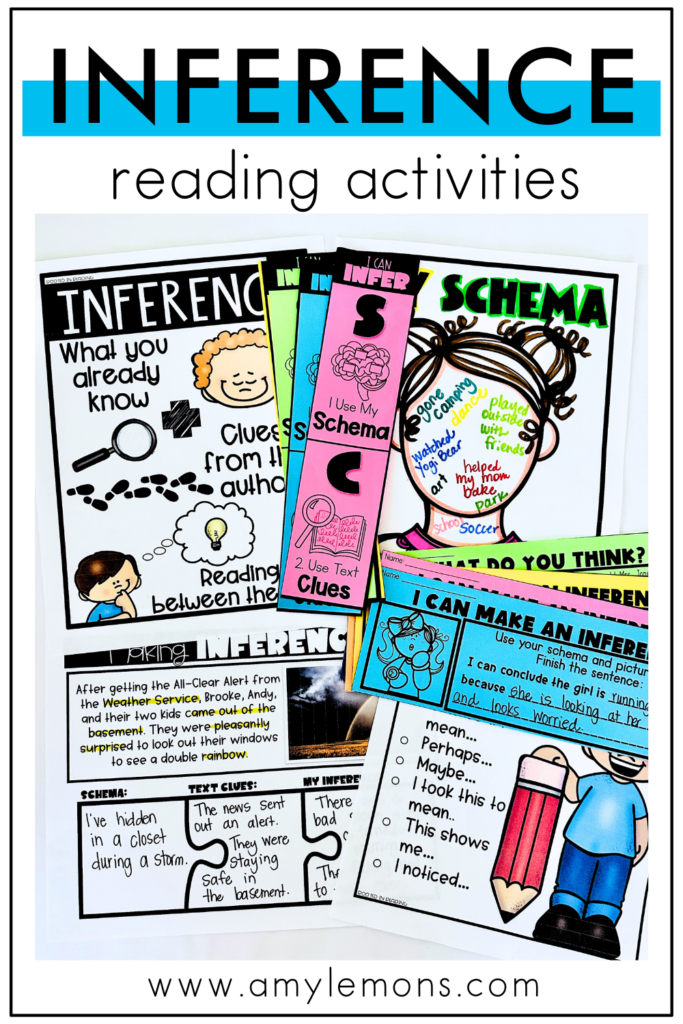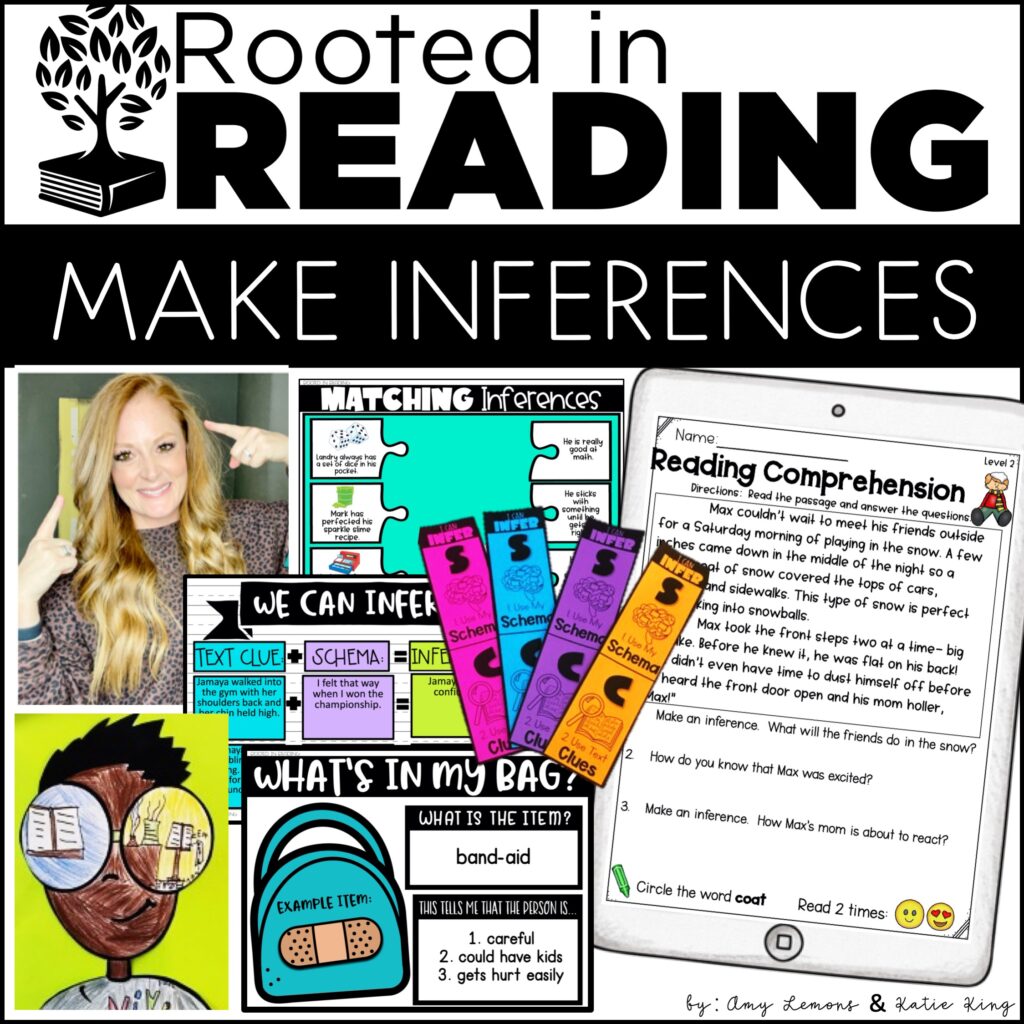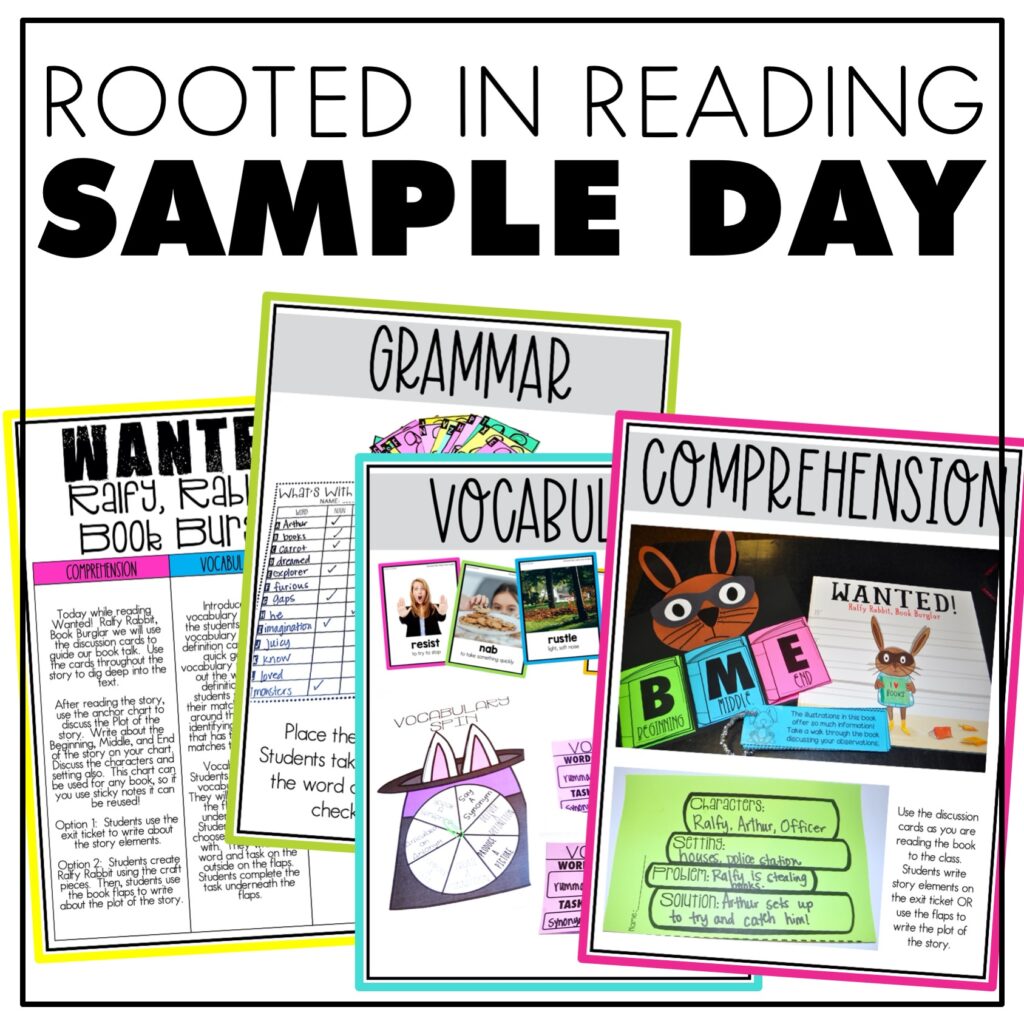

Going from literal to abstract is a huge challenge in the classroom. Students don’t have as much life experience to understand many underlying messages between the lines of the text and teachers may find it difficult to model this abstract thought process. To combat these challenges, we have to lean on some essential teaching tools to help students understand that making inferences is a natural part of the reading process.
These tools should provide simple explanations, relatable scenarios to kids, and tons of opportunities for you to model, model, model. Here are a few ideas.
Readers make inferences as they read every time they read without knowing it. As readers read the text, they pull from their life experiences and background knowledge to understand what the author may not explicitly state. We call this “reading between the lines, ” meaning that readers figure out things that are hinted at but not directly said.
Here’s the equation we use for making inferences:
What you already know (schema) + Clues from the author = Making an inference (reading between the lines)
Picture it like this: You are reading a story. The character’s face is red. They are stomping their feet. We might infer that the character is angry, even though the author doesn’t directly say, “This character is mad.” We’ve felt that emotion before. We’ve seen movies where characters act this way. We may have seen a sibling or friend act that way. Our schema + the text clues help us to know that the character is angry.
Check out this Let’s Infer Chant to help students understand this process!
Schema refers to the background knowledge or experience that students bring to reading. It is like our mental file cabinet. Our schema is all of the information in our brain. It is made of the places we’ve been, the books we’ve read, the people in our lives, and much more!
Schema helps the reader make sense of new information and fills in gaps in the text they are reading. Using our schema helps us make more accurate inferences because we relate the text to what we already know.
Students need to understand that we are constantly activating our schema while we read. Before reading a specific text, we can activate our background knowledge on a particular topic. That schema will help us to understand the text in a deeper and more meaningful way.
Check out this Schema Chant to help students better understand how they use their schema when making inferences!
Making inferences can seem like a daunting task. To make it more relatable, use a “Guess Who” activity.
Students draw themselves wearing huge glasses and, in each lens, draw a clue about themselves. It may be an interest, hobby, sport, etc. that they enjoy. Or it may be a clue about their personality. They need two clues that would allow others to identify them.
Once created, students use their schema plus the picture clues to help them identify each classmate.
Here are three easy ways to incorporate making inferences into your routine:
Model Making Inferences: When you are reading aloud a story to students, model making inferences even if that’s not your comprehension skill focus for the day. For example, discuss how you are using clues from the text and your own knowledge to infer the character’s feelings or motivations.
Use the Think-Aloud Strategy: As you read aloud a text, pause to model how to make inferences. For example, “I see that the dog has dirty paws. I see the child looking for the dog with an umbrella. I infer that the dog got out in the rain”
Use Interactive Anchor Charts to document discussions while reading aloud a text. Jot down students’ schema. Record clues from the text. Then, as a class make inferences while you are reading. Use questions such as “What clues did you use to figure that out?” or “Why do you think the character did that?” to guide those discussions.
Exit tickets offer many benefits in the classroom by providing quick insights into students’ understanding of the content. Teachers can quickly gauge comprehension and identify where a student may need more support. Exit tickets are a quick and effective way for teachers to provide immediate feedback.
Inferring exit tickets will allow students to practice making inferences in a structured environment. Giving students one simple and relatable paragraph or picture helps them focus on the task at hand.
Pair that with a limited number of questions or a sentence frame to provide extra support while making inferences.
If you’re ready to take the overwhelm out of teaching students how to make inferences, check out our Digital and Printable Making Inferences Reading Toolkit as seen throughout this post!

Are you struggling to find printables, activities, lessons, and ideas to teach the reading skill of Making Inferences while reading a text? This Digital and Printable Reading Toolkit will give you mini-lessons, reading response worksheets, anchor charts, and more to help target making inferences while reading.
Total Pages: 200 pages
File Size: 80 MB

Hey, y’all! My name is Amy Lemons and I am passionate about providing students with both engaging and effective standards-based Math and ELA lessons.

Sample a day of Rooted in Reading with these lesson plans and activities for Reading Comprehension, Vocabulary, and Grammar!